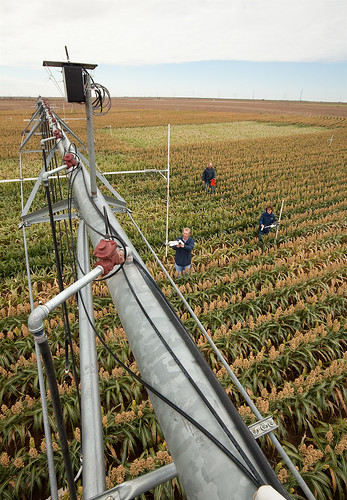
For nearly 400 years, Thanksgiving has been a time in North America when families come together to celebrate food and agriculture. As we reflect on yet another year, agricultural scientists at USDA continue to keep a wary eye on the future. At the end of what may be the hottest year on record, a period of drought has threatened the heart of one of the most important agricultural production zones in the United States. Water demands are increasing, and disease and pest pressures are continually evolving. This challenges our farmers’ ability to raise livestock and crops. How are science and technology going to address the problems facing our food supply?
To find answers, agricultural scientists turn to data—big data. Genomics, the field of science responsible for cataloging billions of DNA base pairs that encode thousands of genes in an organism, is fundamentally changing our understanding of plants and animals. USDA has already helped to fund and collect genomes for 25 crop plant species, important livestock and fish species, and numerous bacteria, fungi, and insect species related to agricultural production. Other USDA-supported research projects expanding these efforts are currently underway, including genome sequencing of 1,000 bulls and 5,000 insect species in the i5K initiative. But classifying and understanding DNA is only part of the story.
Even if neighboring farmers were to raise identical varieties of tomato, small variations in the environment can reduce crop performance and/or increase pests and disease. So, scientists and farmers are increasingly using technology like satellites, drones, sensors, and laser-guided tractors to collect thousands of data points about the environmental conditions in a field, such as temperature, humidity, soil composition, or slope of the land. Using these “precision agriculture” techniques, farmers could reduce their environmental footprint by matching land management practices to the unique environments on their farm.
In the long term, USDA researchers are hoping to combine precision agriculture and genomics in a remarkable way—to develop crops with combinations of genes that lead to the best performance in specific environments. To support this goal, USDA continues to lead the way in collecting and maintaining open access to these types of agriculture data. As a result, your local farmer’s market or grocery store may one day have even more varieties of produce to choose from on Thanksgiving, with each optimized for the farm or field on which it was grown.
